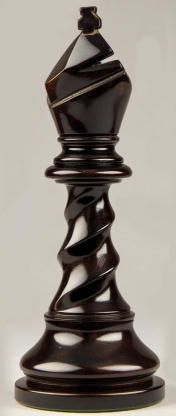
The boyscout was originally discovered by J. de A. Almay of Budapest, and is reported in Anthony Dickins's A Guide to Fairy Chess, so may be originating in the first half or middle of the 20th century.
It was rediscovered by Ralph Betza in 1996, and then published on this website, under the name of Crooked Bishop. He wrote further on it in 2001.
The crooked bishop is used in Adrian King's chess variant Jupiter. (Link to external site.)
![]()
![]()
![]()
![]()
![]()
![]()
![]()
![]()
![]()
![]()
![]()
![]()
![]()
![]()
![]()
![]()
![]()
![]()
![]()
![]()
![]()
![]()
![]()
![]()
![]()
![]()
![]()
![]()
![]()
![]()
![]()
![]()
![]()
![]()
![]()
![]()
![]()
![]()
![]()
![]()
![]()
![]()
![]()
![]()
![]()
![]()
![]()
![]()
![]()
![]()
![]()
![]()
![]()
![]()
![]()
![]()
![]()
![]()
![]()
![]()
![]()
![]()
![]()
![]()
The boyscout can move to the marked squares including the squares of the rooks or the pawn.
Betza originally valued the piece at a strengt, slightly larger than that of an ordinary bishop, but has since come to value it as about a Rook over the course of the game, with the Crooked Bishop being more valuable in the opening and midgame, and less in the endgame. You may find his original comments on this piece interesting to read.